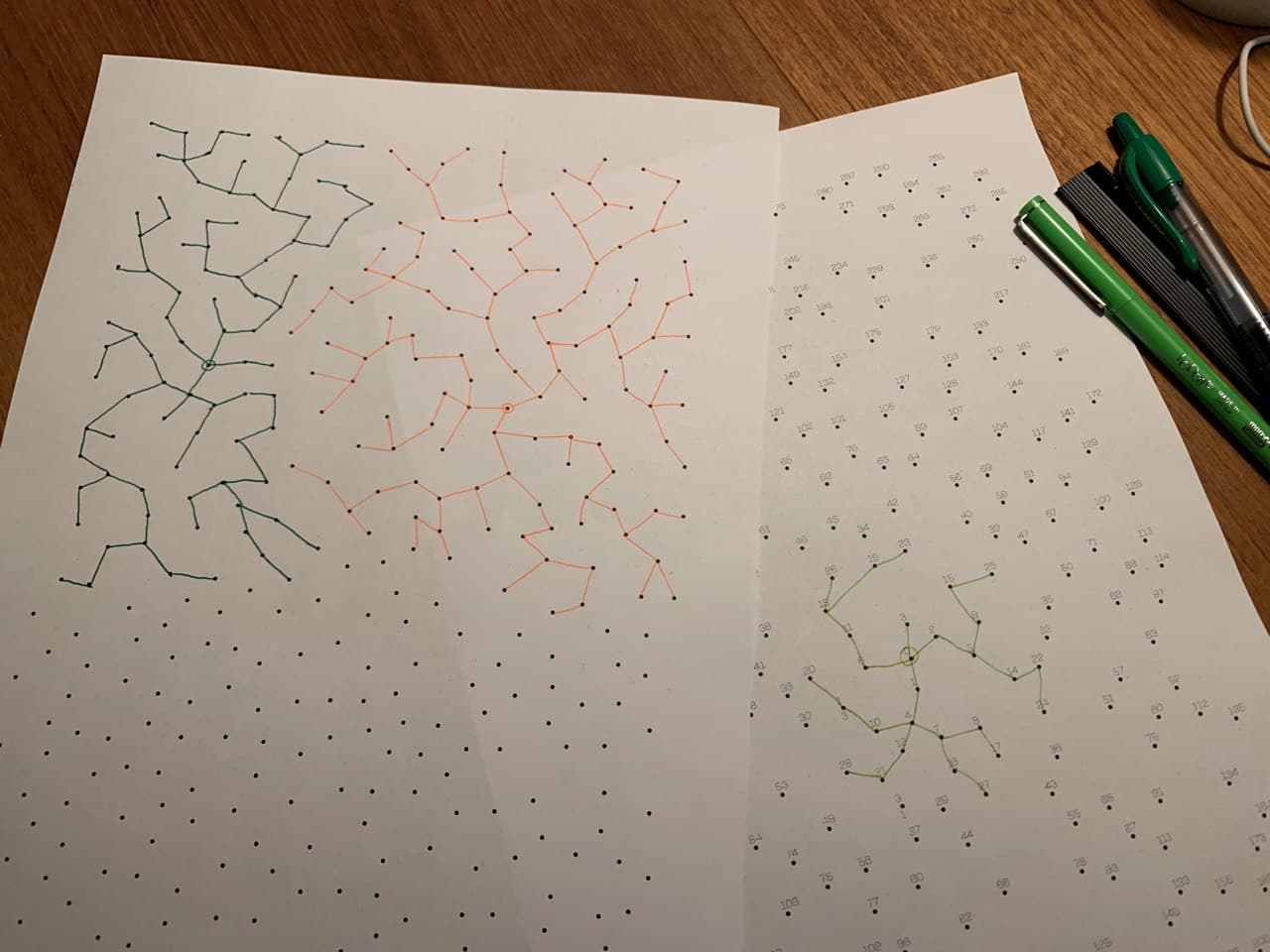Tenday Notes 11 Jan - 20 Jan 2021

Every ten days I share a quick digest of what I've been working on. Here's the latest. More in the series here. Want them in your inbox? Sign up.
The first weeks in my new job at Possible have been great. The team and culture are fantastic, and I've already been able to be useful - designing up a factsheet on the impact of Low Traffic Neighbourhoods in London.
One thing that surprised me, though, is how exhausted I felt at the end of the first few days. I've been working largely solo for the best part of the year, and suddenly being thrust into an environment where I'm working with 25 new people and having Zoom calls all day long was a shock to the system. My brain, magic as brains are, adapted pretty quickly and now I'm starting to get used to it. But wow, those first few days were intense.
I've been cultivating a new hobby that I wanted to write about in the last newsletter but didn't quite have the spacetime. It began in December when a friend of mine who long-term-loaned some music equipment from me made an offer to just buy the kit, and it reawakened some brief interest I had earlier in the year in the Korg MS-20 Mini, a programmable semi-modular synthesizer.
I looked long and hard at the MS-20, but eventually decided that it might be fun to go a level deeper and get into modular synths. Modular, for those not in the know, refers to different bits (modules) of music hardware that perform different functions and can be hooked up through a common interface. You're building your own synth, basically, from the component parts.
For example, you might have one module that generates a tone, another that filters some frequencies from it, another that adds effects like delay or reverb, another that mixes two tones together, and so on. It's like a production line for sound, and you can get some really wild stuff going on. A few examples include:
- State Azure's "Snow Drift"
- Ann Annie's "Rainy Day Modular #2"
- MycoLyco's "Ten Minutes of Pink Oyster Mushrooms Play Synthesizers"
In the background of all those, you'll see the modular "rack" - which can be large or small, and consists of lots of different modules wired up together with cables. These "patch" cables are how the sound and electrical signals are sent between the different modules - the common interface I mentioned.
What I love about the world of modular synths is that when I jumped in I had literally no idea what was going on. The descriptions of all the modules were basically incomprehensible to me. Look, read this:
Blinds is a 4-channel voltage-controlled signal polarizer. Each channel consists of a polarizer circuit, also known as a four-quadrant multiplier. This circuit acts like a VCA, except that a negative control voltage will cause the output signal to be inverted, instead of being silenced. Blinds’ outputs are daisy-chained, allowing adjacent groups of 2, 3, or all 4 channels, to be mixed together.
I mostly know what that means now, but when I first read it my brain was exploding. And there's little I love more than a system I don't yet understand but has the potential to create something beautiful. So I was lured in.
I did a lot of research, using a mix of YouTube videos and free modular software emulator VCV Rack to understand how sound signals move through different modules, and what the terminology actually means. Eventually, I invested a bit of cash in a bare-bones modular setup. I have a Pittsburgh Modular Lifeforms SV-1b, which has a lot of the "basics" all in one neat package. I have a Monsoon, which is a textural synth that I'm using mostly for reverb and delay effects. And I have a Disting mk4, which is a Swiss Army Knife of a module - it can do almost anything you might want it to do, but only one thing at a time. I also added an Arturia Keystep 37 so that I've got a keyboard and can send specific notes when I want to.
One joy of going modular is that you can swap things in and out, and each individual module isn't actually that expensive. There's a healthy resale market for modules oin sites like Reverb, which means that any investment can usually be recouped without losing too much.
Another joy is that the way I'm interacting with my modular rack is not like "writing a song" in a traditional sense. Instead it's more like exploration, wandering through an ever-evolving musical soundscape that generates interesting noises over time. I set something up, let it run for a while, tweak it, let that run, and see how it all goes. There's also lots of scope to do data sonification through the Disting Mk4, though I've not tried any of that yet.
The biggest joy for me, though, is that all of this can be done without screens! An indoor hobby that doesn't involve a screen is a rare thing these days, and I've been really enjoying turning off my devices and just playing with sliders and knobs and wires for an hour or so here and there.
If any of you folks are into modular synth, I'd love to hear about it so we can trade tips for interesting modules and patches. I feel like I'm right at the start of this journey, and it's always nice to have fellow travellers.
I've started reading Susan Sontag's On Photography, after having been recommended it so many times. It's a bit of a dense read, and it references a lot of art history that goes whistling over my head, so I've been tackling it in chunks with a pencil and Wikipedia at hand.
But there are some great bits about why tourists take photos (because it feels like work, and we feel guilty when we're on holiday that we're not working), and about the parallels between cameras and weaponry (loading film, aiming the lens, shooting a photo). She also notes that safaris used to be about shooting animals with guns, and now they're about shooting them with cameras.
Otherwise I've been spending quite a few of my exhausted evenings on the sofa, watching TV shows. We finally finished Schitt's Creek after the last series appeared on Netflix. The whole thing is a triumph, though I didn't find the final season quite as good as its predecessors.
We also waded through the last few episodes of Discovery, which is so bad, but we finished it for completeness' sake. It's tough to put my finger on why I find it so unbearable - it's only partially that it rips up everything I love about Star Trek. I think it's also that the characters are so two-dimensional (and in some cases, barely one-dimensional), that every plot point is telegraphed a light year away, and that the only language the writers use to communicate that someone is not a "good guy" is on-screen torture and execution. A horrible show, all things considered.
What's good? Well, Matt Webb's blog is great lately (I think I have mentioned this before). I loved this piece on unsettling product design and this one about apps for cameras and maps.
I've been working on a little zine project with some friends, for which I'll be contributing a couple of spreads. The theme is "Hope", and I'm planning to do one visualization piece on tipping points for societal response to climate change, and one on coral reefs that'll involve a sort of generative dot-to-dot thing. I'm still figuring both out, as I find the time. More to come.
I've also been spending a lot of time and energy on getting my talk together for Outlier about Loud Numbers. It's going to be the first time that a general audience will be able to hear our work, which is a bit scary. But it has to happen at some point!
As practice, we gave a talk to some students at Cardiff University's journalism school - which went down well. I think they enjoyed it - I barely dared to look at their faces in the Zoom window as the track was playing. They asked a lot of smart questions, which was great.
The Outlier talk, though, is pre-recorded. Which is both a blessing and a curse. It's a blessing because it takes away a lot of the performance anxiety around attending the conference itself. It's a curse because editing together a talk from two people in different countries, and then putting music and sounds under that, is not an easy task. A huge thankyou to Silfa for doing the bulk of the work on the video edit.
I wrote a little more on the above, and about the tension of making things versus promoting things in the latest Loud Numbers Devlog.
This essay on newsletters, by Robin Rendle, is beautifully put together. There's a making-of post here.
Through that link I also discovered Blot - a minimalist blogging platform with no interface. Basically you just put files in a folder and it turns them into blog posts - images, text files, Word Documents, Markdown and more.
I've been looking for a way to get my generative art off Instagram and Twitter and onto a platform of my own, and perhaps this is it? I'll take a closer look when I have a bit more time.
Here's a nice site that lets you slide back and forth between different UK basemaps - including maps from 1900. Select "Ordnance Survey 1900s" in one of the dropdowns in the top right or left, and then you can see what your neighbourhood looked like a century ago.
Trying very hard not to buy fonts at the moment, but Millik is pulling at my wallet strings.
Phew, let's stop there for today. I feel like this newsletter's a little bittier than normal, especially at the end, but that's probably a reflection on my energy levels right now. Normal service will, I hope, resume in due course.
In the meantime, go get yourself a ticket to Outlier and join for our talk about data sonification and Loud Numbers!

